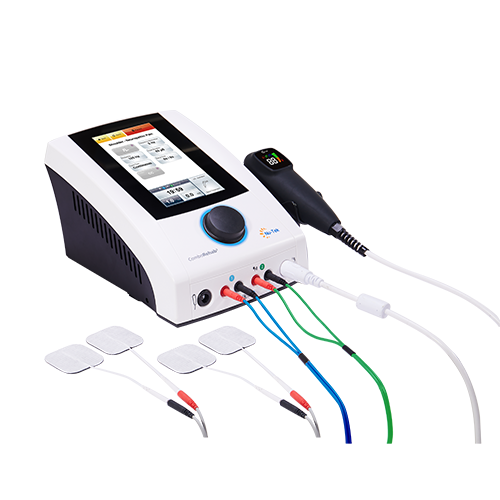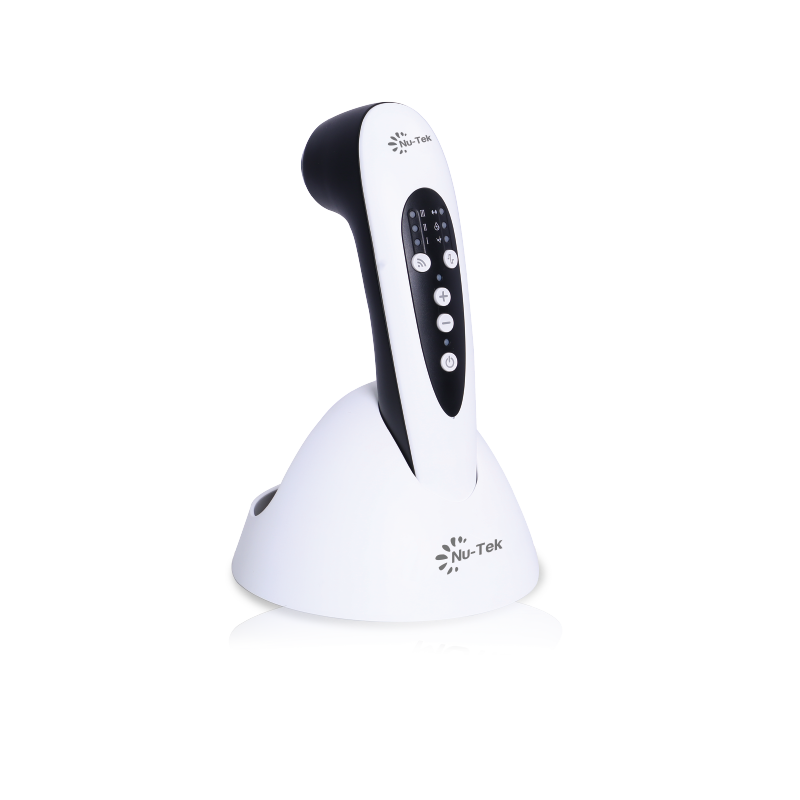Deep learning will enhance EMG (electromyography) biofeedback in physiotherapy
Deep learning can significantly enhance EMG (electromyography) biofeedback in physiotherapy by improving the precision and personalization of treatments. Here's how:
1. Signal Processing and Noise Reduction: EMG signals are often noisy, making it difficult to interpret muscle activity accurately. Deep learning models can automatically filter out noise and artifacts from EMG data, improving the quality of the signals used for biofeedback.
2. Pattern Recognition and Classification: Deep learning algorithms, such as convolutional neural networks (CNNs), can learn complex patterns in EMG data that correspond to specific muscle activities. This enables more accurate detection of muscle performance, helping physiotherapists track patient progress or diagnose specific dysfunctions.
3. Personalized Therapy: By analyzing large datasets of EMG signals from different patients, deep learning can identify individual-specific patterns in muscle response. This could lead to personalized physiotherapy treatments tailored to a patient's unique muscular needs and conditions.
4. Real-Time Feedback: Deep learning models can process EMG signals in real-time, providing instant feedback to both patients and therapists. This helps patients adjust their movements or exercises immediately, optimizing rehabilitation.
5. Predictive Analysis: With enough data, deep learning can be used to predict patient recovery trajectories. By analyzing past EMG patterns and treatment outcomes, the models can help physiotherapists anticipate how patients will respond to specific therapies.
6. Automating Diagnosis: Deep learning can assist physiotherapists by automating the analysis of EMG biofeedback. Instead of manual interpretation, the model can highlight areas where muscle activity is abnormal or suggest exercises to target weak muscles, improving the efficiency of therapy sessions.
Overall, deep learning offers the potential for more precise, efficient, and personalized physiotherapy treatments by making EMG biofeedback smarter and more responsive.
Automating diagnosis using deep learning in EMG biofeedback for physiotherapy involves leveraging advanced algorithms to analyze complex EMG data and assist physiotherapists in making more accurate and faster decisions. Here’s a deeper look at how it can work:
1. Signal Feature Extraction
Deep learning algorithms, especially Convolutional Neural Networks (CNNs) and Recurrent Neural Networks (RNNs), can automatically extract meaningful features from raw EMG signals. Traditional methods often require manual feature engineering (like amplitude, frequency analysis, or time-domain features), but deep learning models can learn these automatically by processing large amounts of data. This feature extraction is crucial for identifying abnormal muscle patterns or dysfunctional motor units.
2. Pattern Recognition for Injury and Muscle Dysfunction
EMG data contains valuable information about muscle behavior during contraction and relaxation. Deep learning models can be trained on labeled datasets (where specific patterns are associated with particular injuries or muscle dysfunctions, such as muscle fatigue, spasticity, or atrophy). Once trained, these models can recognize specific patterns in real-time EMG data, flagging potential injuries or dysfunctions that require intervention.
For example, the model could be trained to recognize:
- Neuromuscular disorders (e.g., ALS, muscular dystrophy) by detecting irregular motor unit action potentials.
- Muscle imbalances where one muscle group is compensating for another, a common issue in sports injuries or after surgery.
- Fatigue onset by identifying signs of muscle fatigue through subtle changes in the EMG signal pattern.
3. Classification of Movement Disorders
Deep learning models can classify movement disorders based on EMG signals. For instance, conditions like Parkinson’s disease or cerebral palsy often present specific muscular activity patterns that are detectable in EMG data. By analyzing these patterns, the algorithm can assist in early diagnosis and help physiotherapists tailor rehabilitation exercises to the patient’s specific condition.
4. Automated Reporting and Recommendations
Once a deep learning model processes EMG signals and detects abnormal patterns, it can automatically generate detailed reports. These reports could highlight areas of concern, such as:
- Weak muscle groups that show insufficient activation.
- Overactive or spasming muscles that might suggest nerve damage or strain.
- Impaired motor control suggesting neurological issues.
The system could even suggest appropriate therapeutic exercises or adjustments to the treatment plan based on the detected abnormalities. For example, if a specific muscle group is underperforming, the system could recommend specific strengthening exercises to target that muscle.
5. Predictive Modeling
Deep learning models can analyze the progression of EMG data over time to predict the future course of a patient's recovery or potential risks of re-injury. By looking at changes in muscle activity and patterns of biofeedback, these models can offer early warnings when a patient is at risk of not recovering optimally or may develop a secondary condition (e.g., compensatory injuries).
6. Continuous Monitoring and Feedback
Automating diagnosis means the deep learning system can work continuously, monitoring a patient’s muscle activity during physical therapy sessions. By detecting abnormal EMG patterns in real-time, it can alert the therapist or patient if the exercise is not being performed correctly or if there’s a risk of muscle overload or improper recruitment of muscle groups. This allows for immediate intervention, ensuring the patient stays on the right track.
7. Objective Data for Clinical Decision-Making
Traditional methods of analyzing EMG data require subjective interpretation by therapists, which can lead to variability in diagnosis and treatment. Deep learning offers objective, data-driven insights, providing physiotherapists with a second opinion that’s consistent and reliable. By automating the diagnosis, deep learning can help reduce diagnostic errors and variability between practitioners.
Real-World Application Example:
- Stroke Rehabilitation: In stroke patients, muscle activation patterns can be erratic due to neurological damage. A deep learning model trained on EMG data from stroke patients could automatically identify abnormal patterns (such as co-contraction of opposing muscle groups) and suggest tailored therapies like functional electrical stimulation (FES) to enhance neuroplasticity.
- Sports Injury Prevention: In athletes, deep learning models could analyze EMG data to detect early signs of muscle fatigue, asymmetry, or compensation patterns that often precede injuries. The system could provide real-time feedback during training to prevent injury by adjusting workload or suggesting corrective exercises.
Challenges to Consider:
- Data Quality and Volume: Deep learning models require large, high-quality datasets for training. In the field of EMG biofeedback, collecting and labeling vast amounts of EMG data can be challenging.
- Model Interpretability: While deep learning models can identify patterns, explaining why certain patterns correspond to specific injuries or dysfunctions can be difficult, which might hinder adoption in clinical settings where transparency is important.
- Real-Time Performance: Processing EMG data in real-time and ensuring low latency is essential for providing timely feedback, especially in therapy sessions where movements and muscle activity need to be corrected immediately.
In summary, automating diagnosis in EMG biofeedback using deep learning can enhance the accuracy, efficiency, and personalization of physiotherapy treatments, enabling better patient outcomes through data-driven decision-making


 中文
中文 Español
Español Français
Français Português
Português
